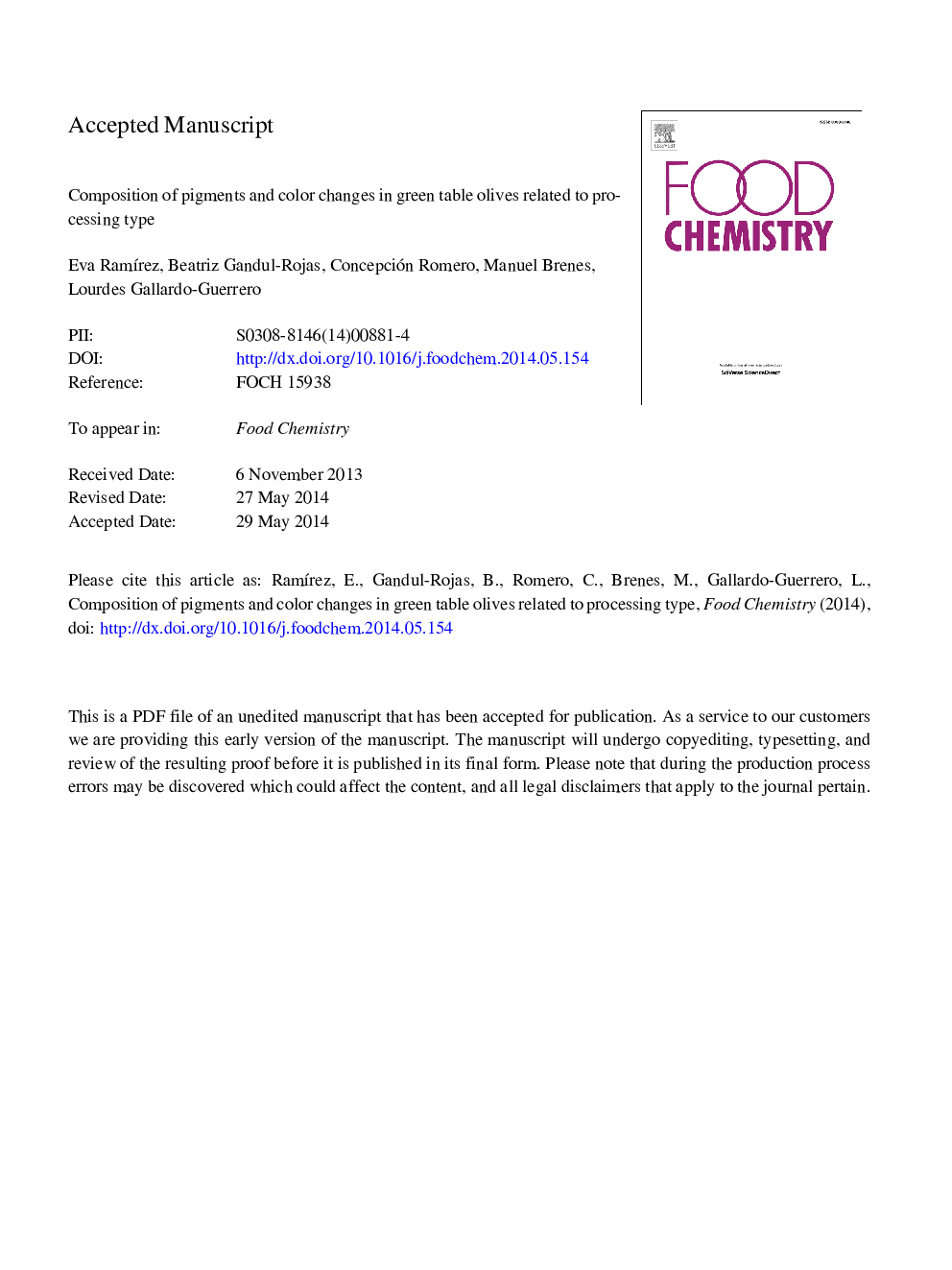| Article ID | Journal | Published Year | Pages | File Type |
|---|---|---|---|---|
| 7595721 | Food Chemistry | 2015 | 37 Pages |
Abstract
Brownish colourations in Natural green table olives (non-treated with alkali) make this product less attractive to consumers than Spanish-style green table olives (treated with alkali), which develop a more appreciated bright golden-yellow colour. These colour differences were studied in relation to changes in the composition of chlorophyll and carotenoid pigments, as well as polyphenolic compounds and polyphenol oxidase enzyme (PPO) activity. Natural green olives showed a different chlorophyll profile than Spanish-style. However, all the chlorophyll pigments formed in both processing types were Mg-free derivatives (mostly pheophytins) with similar colourations, ranging from grey to green brownish. In the carotenoid fraction no appreciable differences were found between both processing types. The fruit's brownish colour was mainly due to polymeric substances with a size of >1000 daltons and polyphenolic nature, resulting from an enzymatic oxidation by PPO of the o-diphenolic compounds present in the fresh fruits.
Related Topics
Physical Sciences and Engineering
Chemistry
Analytical Chemistry
Authors
Eva RamÃrez, Beatriz Gandul-Rojas, Concepción Romero, Manuel Brenes, Lourdes Gallardo-Guerrero,
